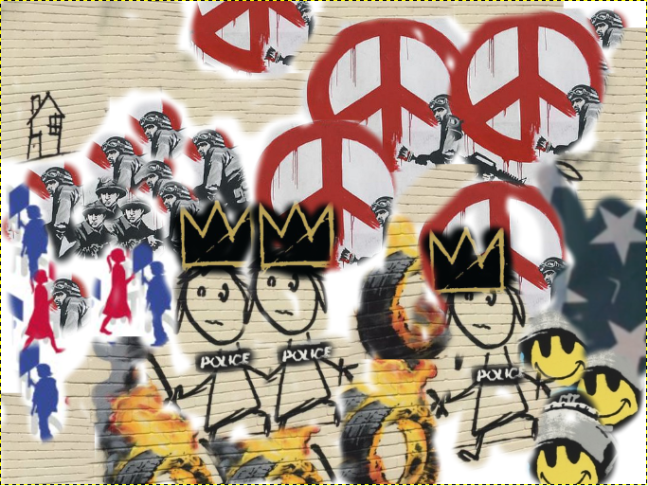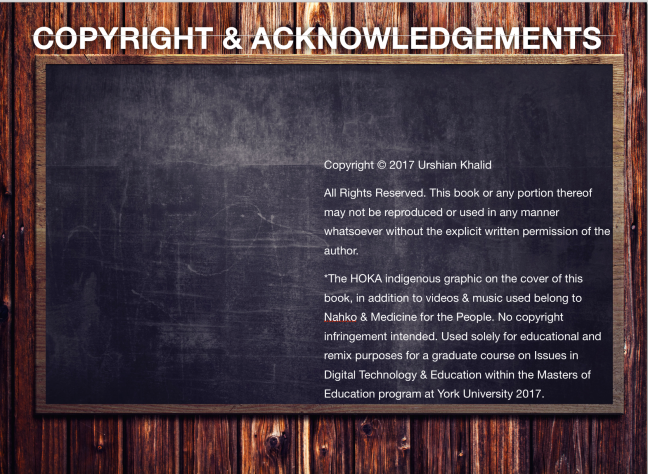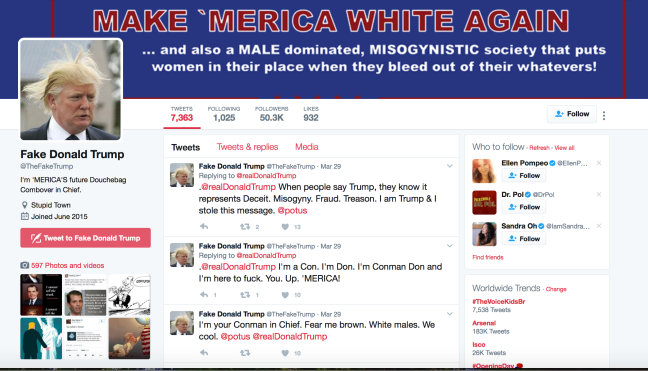Kellner, D., & Share, J. (2007). Critical media literacy, democracy, and the reconstruction of education. In D. Macedo & S.R. Steinberg (Eds.), Media literacy: A reader (pp. 3-23). New York: Peter Lang Publishing
This week’s readings by Kellner & Share and Luke et. Al examine critical media literacies in relation to ethics, democracy and curriculum. In their article titled, “Critical Media Literacy, Democracy and the Reconstruction of Education”, Kellner and Share suggest that we live in a time where the majority of information people receive comes less often from print sources and more typically from multimedia formats. This means that media forms have a powerful role to play in organizing, shaping, disseminating information, ideas and values, which ultimately create a collective public pedagogy. The media (and before that the top-down tree branch of governments, institutions, political agendas) controls what information is put out to the general public.
To build just, democratic societies where individuals like Donald Trump are not elected, or are seen running for office and immediately shot down by the collective, intelligent public stating a strong and resounding, “NO!”, our education system must empower students and citizens to critically read media (and other political) messages and produce media of their own. This would allow citizens to be more active participants in a democratic society – one that doesn’t elect bumbling buffoons like Trump. Students would be much better equipped to challenge the narratives they receive in day to day life, and be able to then engage in critical discourse analysis (on smaller and larger scales depending on what’s going on in the world at the time) with a problem-solver approach to issues.
The issue where we run into some trouble, I think, is integrating critical media literacy on a larger scale outside of, and not only in media studies class. We need to re-conceptualize and expand on our understanding of literacy and pedagogy so that we as educators are able to lead students to a “reconstruction and democratization of education and society”. Perhaps we can do this by of course, leading by example and implementing the IBL, self-directed teaching models as discussed in class, but also from a top-down policy approach where education is less a prescription pad of here are things you need to learn to become the following profession, and more of a “what is the root of what’s causing our current world issues? Lets work to address that!”. The top-down approach (in addition to the localized, leading through teaching example) signifies a prevention of social world-issues vs. treatment of world issues, with treatment plans where necessary. I think if the pedagogy we’ve been discussing for the last few weeks was implemented a 100% from the ministry down, I think we’d have students who aren’t afraid to be wrong – and thus, can operate through a problem-solving, inquiry approach to societal issues having grown up.
Kellner and Share suggest that literacies evolve and shift according to socio-cultural changes in society, and the interests of the elites. A question that came up for me while I read this was: what is it that we’re learning currently, from whose perspective? What are we be geared towards politically? Its a shame that we’re not able to ask these questions until university, or even graduate school, and that teachers in middle and high schools are often under the strict “I can’t talk about this, or discuss my views on this” guideline. I don’t think we can expect students to become engaged members of a democratic society if they aren’t able to discuss important (and controversial) issues in class.
Kellner and Share suggest that education loses its “transformative potential when programs teach students the technical skills to merely reproduce hegemonic representations” without the awareness of ideological implications or any type of social critique. I agree. What’s the point of education if all we’re doing is creating clones of sheep on a conveyor belt heading essentially the same direction – being programmed rather than being the one who’s doing the programming. We can’t “program” the world and education for a better future if we’re constantly being “programmed” to sustain hegemonic ideologies. This is why implementing critical media production in our classrooms is imperative in empowering those who are often marginalized or misrepresented in mainstream media (recent example: muslims). Media production allows us to engage in the social reality that the world is experiencing. Kellner and Share state, “the new technologies of communication are powerful tools that can liberate or dominate, manipulate or enlighten,” which is why it is crucial that educators teach students how to critically analyze technology and use it wisely.
Luke, A. et al. (2017) Digital ethics, political economy and the curriculum: This changes everything. In Handbook of Writing, Literacies and Education in Digital Culture. Routledge, New York. (In Press)
Luke et. Al, in their article titled, “Digital Ethics, Political Economy and the Curriculum” outline many of the same ideas and add social justice and ethics to the mix. As I mentioned above, Luke et. Al suggest a need for rethinking current policy and curriculum strategies through the following proposition: “the educational challenge raised by digital culture is not one of skill or technological competence, but one of participation and ethics.” They suggest that the educational challenge raised by digital culture requires (1) equitable access; (2) ongoing dialogue over the personal and collective consequences of everyday actions and exchanges with digital resources and social media; (3) the critical examination of the semantic contents of media and how these may or may not portray the world; and (4) the use of media for the exchange of ideas, viewpoints and resources as part of a constructive civic and community engagement.
If the educational challenge raised by media is one of participation and ethics, how can youth engage and participate as valuable citizens in the public, political, cultural and economic sectors of the internet and media? I discussed the idea above that if middle or high school teachers are not willing or able to discuss critical issues in class, how are students supposed to understand that its okay to engage in what’s happening with the world? In relation to the internet and media, I think students won’t be able to critically analyze what’s wrong, right, truth, falsehood, representation and misrepresentation — especially in context of some of the “fake news” and Obama wire tapping that Trump speaks of. Without educators setting the example through pedagogy, I believe it would be very difficult for youth to engage as members of their local and global community without fear of being wrong and being marginalized for it. I think students need the questions around “what it is to be human”, ethics, and how to live “just and sustainable lives” in the constant barrage of information from digital technology. As Luke et. Al suggest, we need to refocus speaking, listening, print, digital reading/writing, signing/imagining to include “rigorous debate, study and analysis of digital communications in terms of: their real consequences as human actions; their ideological, scientific and cultural codes, truth claims and meanings; and their everyday possibilities for community based cultural and social action, for art and science, for human conviviality and sustainable forms of life.”







